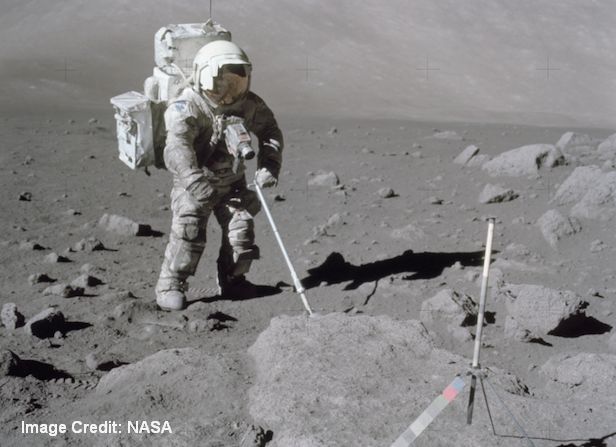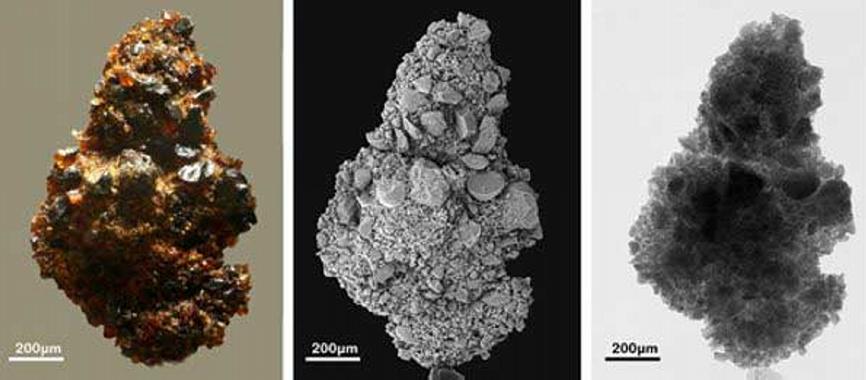Lecture: The Microscopic World of Lunar Dust
About this event :

Astronaut Harrison Schmitt scoops samples of lunar dust and rock during the Apollo 17 mission to the Moon in 1972. Image Credit: NASA

A light, secondary electron, and x-ray image of a particle isolated from the orange soil collected from the rim of Shorty Crater in the Taurus Littrow Valley by Apollo 17 Astronaut Harrison Schmitt. Image Credit: LeHigh University
Visiting Research Scholar in the Department of Materials Science and Engineering, Lehigh University. Pennsylvania , USA.
Dr Carol Kiely visiting research scholar in the Department of Materials Science and Engineering at Lehigh University, Pennsylvania, USA and SAS member, will be giving a talk on “The Microscopic World of Lunar Dust” on Sunday the 18th December 2016 from 7 pm in the Discovery room of Washington Wetlands Centre .
“Magnificent Desolation”. Those were the words uttered by Apollo 11 astronaut Buzz Aldrin as he allowed his eyes to take in the starkness and monochrome hues of the lunar surface.
The scene was a pristine desert landscape, but instead of the familiar beige-colored sand, the entire surface was covered in a fine, charcoal-gray powder. Despite being the focus of intense scientific study for over forty years, very few optical micrographs of lunar dust particles have been published.
Those on display in museums are either in monochrome or low resolution as most researchers have relied on scanning electron microscopy to show the external structure and morphology of individual particles.
Their internal structure has only been revealed by optical and SE micrographs of polished section of particles embedded in resin.
These tiny particles are national treasures and, quite frankly, deserve more.
Carol Kiely and her colleagues have used a combination of high resolution optical, scanning electron and X-ray microscopy together with some, innovative lighting techniques,stereo imaging and rotational movies to reveal the internal and external structure of wide variety of individual lunar particles, from agglutinates to impact spherules, in an attempt to dispel the myth that lunar dust is just a fine gray powder.
Carol Kiely is an accomplished research scientist and science journalist. She obtained her Ph.D. in chemistry in 1984 from the University of Newcastle-upon-Tyne, and is now a visiting research scholar in the Department of Materials Science and Engineering at Lehigh. She loves all aspects of science, especially astronomy, and is currently the star party coordinator for the Lehigh Valley Amateur Astronomical Society.
Google Map
Your host : Martin Kennedy
